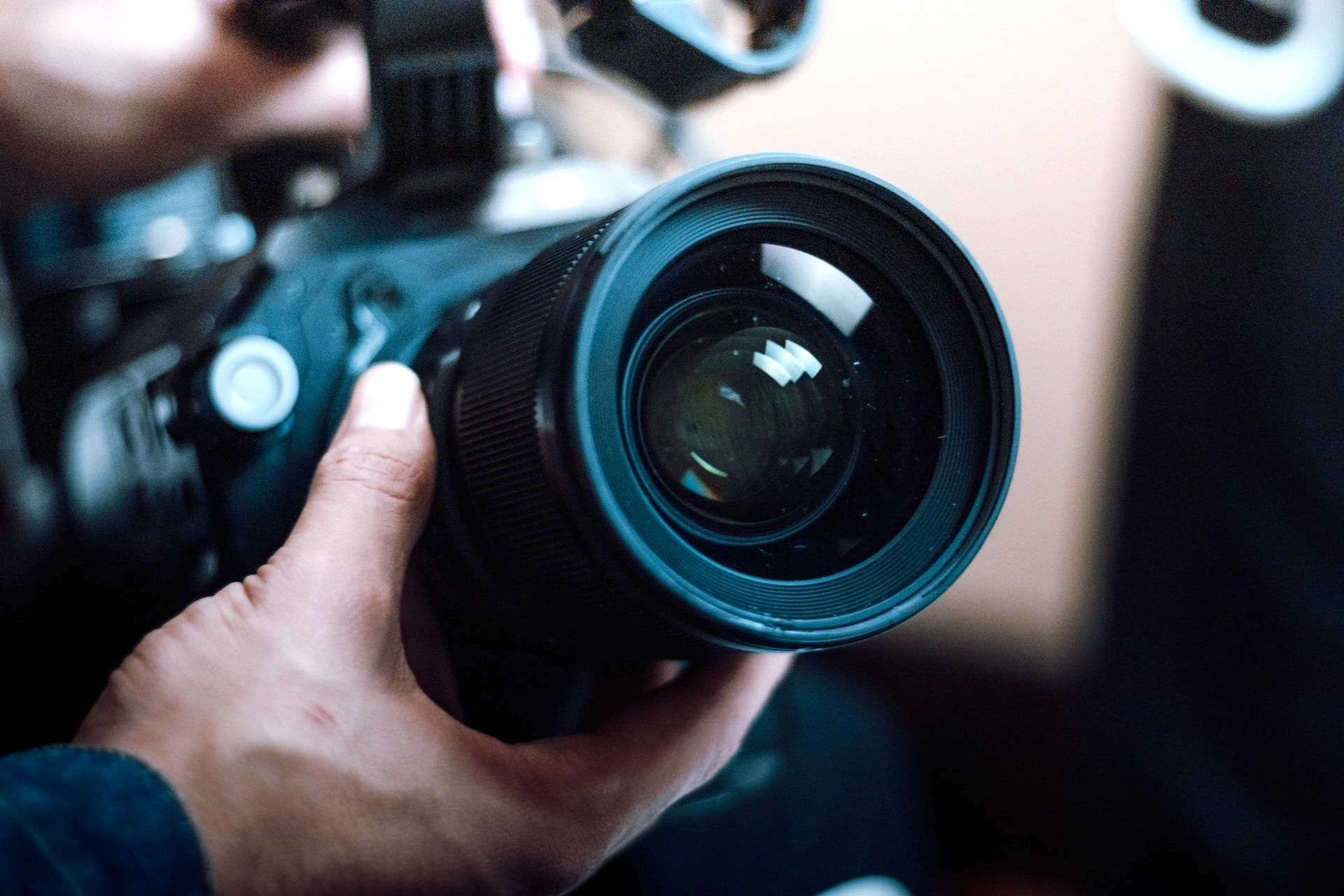
Lens crafting has a rich history that dates back centuries. From ancient civilizations using polished crystals to the invention of the first eyeglasses in the 13th century, lenses have transformed how we see the world. Did you know that early lenses were made from materials like quartz and beryl? These early innovations paved the way for modern optical technology. Today, lenses are crafted with precision using advanced materials like polycarbonate and high-index plastics. This evolution has not only improved vision correction but also enhanced various fields such as photography, astronomy, and even virtual reality. Join us as we explore 35 fascinating facts about the history of lens crafting, revealing how these small pieces of glass and plastic have made a big impact on our lives.
Key Takeaways:
- Lens crafting has a fascinating history dating back to ancient Egypt, with key advancements during the Renaissance and scientific revolution, leading to modern innovations in space exploration, medicine, and everyday life.
- From ancient magnifying glasses to modern space telescopes, lens crafting has evolved to revolutionize industries and daily life, with exciting possibilities for smart lenses, advanced materials, and nanotechnology on the horizon.
Early Beginnings of Lens Crafting
The history of lens crafting is rich and fascinating. Let's explore some intriguing facts about its origins and development.
-
The earliest known lenses date back to ancient Egypt and Mesopotamia around 750 BC. These were simple magnifying glasses made from polished crystal.
-
Ancient Greeks and Romans used glass spheres filled with water to magnify text, a precursor to modern lenses.
-
The word "lens" comes from the Latin word "lentil," due to the similarity in shape between a lentil bean and early lenses.
-
In the 10th century, Arabian scientist Alhazen wrote extensively about optics and lenses, laying the groundwork for future advancements.
The Renaissance and Scientific Revolution
During the Renaissance, lens crafting saw significant advancements. This period was crucial for the development of modern optics.
-
In 1608, Hans Lippershey, a Dutch spectacle maker, is credited with inventing the first telescope, revolutionizing astronomy.
-
Galileo Galilei improved upon Lippershey's design, creating a more powerful telescope that allowed him to observe celestial bodies in unprecedented detail.
-
The microscope was invented around 1590 by Zacharias Janssen, another Dutch spectacle maker, opening up the microscopic world to scientists.
-
René Descartes, a French philosopher, and mathematician, made significant contributions to the understanding of light and optics in the 17th century.
The 18th and 19th Centuries
The 18th and 19th centuries brought further innovations in lens crafting, driven by scientific curiosity and technological advancements.
-
In 1733, Chester Moore Hall invented the achromatic lens, which reduced chromatic aberration and improved image clarity.
-
Joseph von Fraunhofer, a German optician, developed the diffraction grating in the early 19th century, enhancing the study of light spectra.
-
The invention of photography in the 1830s by Louis Daguerre and William Henry Fox Talbot spurred the development of better camera lenses.
-
Carl Zeiss, a German optician, founded his company in 1846, which became renowned for producing high-quality optical instruments.
Modern Lens Crafting
The 20th and 21st centuries have seen remarkable advancements in lens technology, driven by the demands of various industries.
-
In 1936, the first anti-reflective coatings for lenses were developed, significantly improving lens performance.
-
The invention of the zoom lens in the 1950s revolutionized photography and cinematography, allowing for variable focal lengths.
-
Contact lenses, first conceptualized by Leonardo da Vinci in 1508, became commercially available in the 1950s, offering an alternative to glasses.
-
The development of plastic lenses in the 1970s provided a lighter, more durable option compared to traditional glass lenses.
Lenses in Space Exploration
Lenses have played a crucial role in space exploration, enabling scientists to explore the cosmos.
-
The Hubble Space Telescope, launched in 1990, uses a 2.4-meter primary mirror and advanced lenses to capture stunning images of distant galaxies.
-
Adaptive optics, developed in the late 20th century, allow ground-based telescopes to correct for atmospheric distortion, providing clearer images of space.
-
The James Webb Space Telescope, set to launch in 2021, features a 6.5-meter primary mirror and advanced infrared lenses to study the universe's origins.
-
Lenses are also used in satellite imaging systems, providing detailed images of Earth's surface for various applications.
Lenses in Medicine
Medical advancements have greatly benefited from lens technology, improving diagnostics and treatments.
-
The invention of the ophthalmoscope in the 19th century allowed doctors to examine the interior of the eye, revolutionizing eye care.
-
Endoscopes, which use lenses and fiber optics, enable minimally invasive surgeries by providing internal views of the body.
-
Intraocular lenses, implanted during cataract surgery, restore vision by replacing the eye's natural lens.
-
Laser eye surgery, developed in the 1980s, uses precise lenses to reshape the cornea and correct vision problems.
Lenses in Everyday Life
Lenses are an integral part of daily life, found in numerous devices and applications.
-
Eyeglasses, first invented in the 13th century, have evolved into various styles and prescriptions to correct vision.
-
Sunglasses, developed in the 20th century, protect eyes from harmful UV rays while reducing glare.
-
Camera lenses, essential for photography and videography, come in various types, including wide-angle, telephoto, and macro lenses.
-
Binoculars, invented in the 19th century, use lenses and prisms to provide magnified views of distant objects.
The Future of Lens Technology
The future holds exciting possibilities for lens technology, with ongoing research and innovation.
-
Smart lenses, currently in development, aim to integrate digital displays and sensors into contact lenses for augmented reality applications.
-
Advances in materials science may lead to the creation of lenses with enhanced durability, flexibility, and optical properties.
-
Nanotechnology could enable the production of lenses with unprecedented precision and capabilities.
-
Researchers are exploring the use of metamaterials to create lenses that can bend light in unique ways, potentially leading to new optical devices.
Fun and Unusual Facts
Lens crafting has some quirky and lesser-known aspects that add to its charm.
-
The largest lens ever made is the 8.4-meter primary mirror for the Large Synoptic Survey Telescope, currently under construction in Chile.
-
Some animals, like the mantis shrimp, have incredibly complex eyes with multiple lenses, allowing them to see a broader spectrum of light.
-
The world's smallest lens, created using nanotechnology, is just a few micrometers in diameter and can focus light with incredible precision.
The Final Lens
Lens crafting has a rich history filled with innovation and discovery. From ancient Egyptians using polished crystals to modern-day precision optics, the journey of lenses has been remarkable. These tiny pieces of glass or plastic have revolutionized how we see the world, literally and figuratively.
Understanding the evolution of lenses gives us a greater appreciation for the technology we often take for granted. Whether it's eyeglasses, cameras, or microscopes, lenses play a crucial role in our daily lives.
Next time you put on your glasses or snap a photo, remember the centuries of craftsmanship and ingenuity behind that simple action. The history of lens crafting is a testament to human curiosity and the relentless pursuit of better vision. Keep your eyes open to the wonders around you, made clearer by the humble lens.
Frequently Asked Questions
Was this page helpful?
Our commitment to delivering trustworthy and engaging content is at the heart of what we do. Each fact on our site is contributed by real users like you, bringing a wealth of diverse insights and information. To ensure the highest standards of accuracy and reliability, our dedicated editors meticulously review each submission. This process guarantees that the facts we share are not only fascinating but also credible. Trust in our commitment to quality and authenticity as you explore and learn with us.


